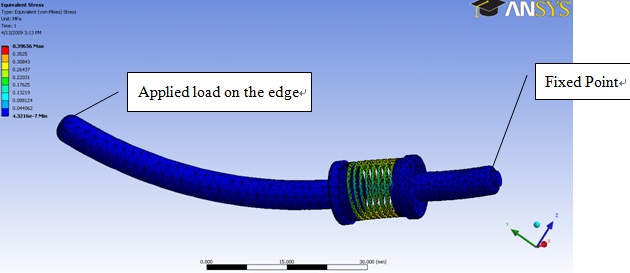Finite Element Modeling
Main Content

Geometric Modeling
Geometric modeling is a mathematical representation of an object that includes both its graphical and non-graphical information. This information forms the database structure of the geometric model which typically describes the type, location, and connectivity of its geometric entities such as edges and surfaces. There are several types of geometric modeling such as wireframe modeling, surface modeling, solid modeling, and feature-based parametric modeling.
In IMEL, we focus on feature-based parametric modeling using Autodesk inventor and Pro/E. In these approaches, features are predefined parts or construction tools in which the user can define the key parameters. Parts are composed of features of positive or negative space. A positive space can be an extruded boss; a negative space can be a hole or segment that is cut away, which can be modified/changed at any time.
Finite Element Analysis (FEA)
IMEL FEA modeling and simulation research capabilities include a full range of engineering applications to drive product designs from concept to product. Dr. Chu has over a decade of finite element analysis experience and can solve your most difficult engineering analysis problems. IMEL has extensive experience in many areas of engineering and analysis, including:
- Structural Analysis (including composites)
- Static, Dynamic, Modal & random vibration analysis (seismic, harmonic and impact)
- Explicit Dynamics Analysis
- Fatigue Analysis (including reliability and service life prediction)
- Fracture mechanics and crack growth studies
- Thermal Analysis
- Heat Transfer, radiation, transient, non-linear material properties and impact analysis
- Computational Fluid Dynamics (CFD)
- Acoustics
- Design Optimization



